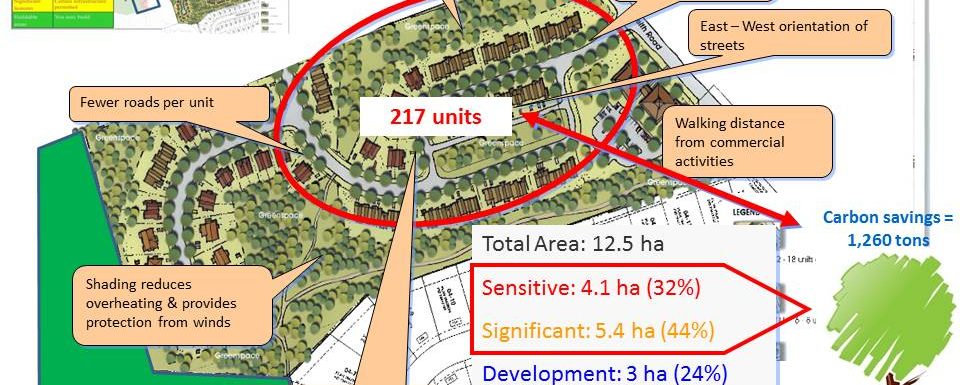Sustainable Community Design at ‘Le Village en haut du Ruisseau’ subdivision

Projects Sponsor
Sustainable Community Design at LeV
The Province of New Brunswick faces challenges with the built environment. Sprawl developments are the norms. They have a negative impact on communities which try to protect valuable natural areas, encourage resiliency of communities to climate change impacts, reduce greenhouse gas emissions and encourage sustainable economic growth. When communities apply the Sustainable Community Design (SCD) concept they are able to respond practically to all environmental, social and economic demands that communities face. Compared to conventional subdivisions building, when builders and communities implement the SCD concept with their developments, they are able to
- Preserve at least 50% of the natural area of a property;
- Meet most Smart Growth and New Urbanism principles;
- Meet most sustainable, healthy, energy-efficient, and low-carbon communities goals;
- Increase sales revenues by at least 4 times;
- Reduce infrastructure costs to as low as 1/3;and
- Help municipalities to increase tax revenues 10 to 24 times more every year.
When the SCD concept was implemented for the subdivision project at ‘Le Village en haut du Ruisseau’ (LeV) in Dieppe (NB) it has provided outcomes that are the envy of builders and citizens in the country who want to attain a better sustainability level with their communities:
- Reduce the imprint of the development on the environment by developing on 24% of the total property, and protecting 76% of the 12.5ha property compared to only the protection of the flood plain and wetlands with a conventional approach (35% of the site). The carbon savings for the project with the protection of the natural space corresponds to 1,260 tons;
- Use of the natural space to provide
- protection for wildlife habitats and wetlands;
- for bike & pedestrian trails;
- for best management practices for stormwater management (constructed wetlands, swales, rain gardens, natural percolation);
- protection from prevalent north winds in the winter (Housing units attain higher energy efficiency without additional insulation (rating 83+);
- Build in a more sustainable way with higher density (6.8 units/acre) to a total of 217 units instead of the initial 5 units (0.16 unit/acre) allowed under the conventional zoning provision for this area of the City; and
- Increase the estimated revenues for the developer from $2.5M to $40M, and tax revenues for the City from $40K to $620K per year, for basically the same services and infrastructure to provide for the citizens living there.
As expected the implementation of the concept is seen by most people as being too good to be true, but builder Charles Poirier can testify that this concept provides far more benefits than the building of a conventional sprawled subdivision.
For free online information on the SCD concept (See: http://www2.gnb.ca/content/gnb/en/departments/elg/environment/content/sustainable_communitydesign.html )














